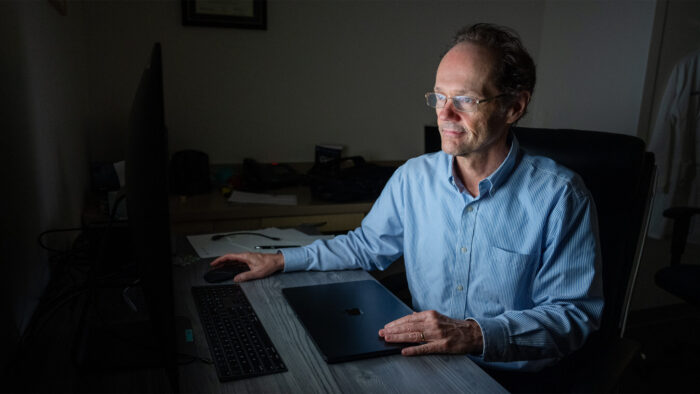Home > Cardiovascular Research > Cardiomyocyte Renewal Laboratory
Cardiomyocyte Renewal Laboratory
The future of preventing and treating heart disease
The Cardiomyocyte Renewal Laboratory focuses on understanding how genetic pathways are connected to adult tissue homeostasis and regeneration. By obtaining an in-depth understanding of these pathways, the team hopes to develop treatments and techniques that will prevent disorders like heart failure and atrial fibrillation and develop new treatments to treat heart disease.
The Cardiomyocyte Renewal Laboratory addresses major areas of disease-related research including heart failure and atrial fibrillation. Led by James Martin, MD, PhD, the lab’s groundbreaking studies have yielded exciting results, including discovering the genetic pathway that prevents the heart from regenerating after an injury. This key biological insight revealed that a failing organ, in this case the heart, can be rejuvenated by removing a specific, inhibitory genetic signal.
The team is dedicated to continuing their work in basic research to develop new treatments for heart disease. This includes developing innovative gene therapies to treat severe heart disease such as heart failure. The lab will conduct further molecular analyses to define novel targets for cardiac regeneration therapy. Cutting edge approaches, such as gene editing technology, will be used to develop novel cardiac therapies.

Hippo pathway deficiency reverses systolic heart failure after infarction
Dystrophin–glycoprotein complex sequesters Yap to inhibit cardiomyocyte proliferation
Texas Heart Institute researchers uncover new ways to regenerate heart tissue after injury
Texas Heart Institute team makes discovery that puts heart regeneration one step closer to reality
Texas Heart Institute study reveals genes critical to heart repair after cardiac injury
You can see how this popup was set up in our step-by-step guide: https://wppopupmaker.com/guides/auto-opening-announcement-popups/

Visit U.S. News & World Report